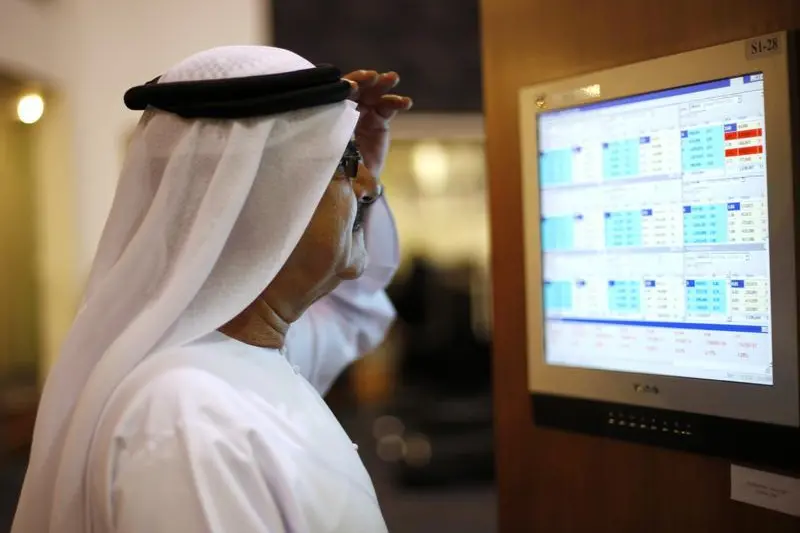PHOTO
Stock markets in the United Arab Emirates need to attract more companies in a braoder range of sectors if they are to remain attractive to investors, the CEO of EFG Hermes's Investment Banking division has said.
Speaking to Zawya on the sidelines of the bank’s annual One on One conference in Dubai on Sunday, Mohamed Ebeid said: “In the UAE, we need more paper (shares). What's out there is not enough, by all means.
“It's very concentrated around financials, so you'll find this very difficult to attract more money getting in,” Ebeid said. “So you need more sectors.”
The UAEs two stock markets struggled to maintain investor interest in 2018 as more foreign capital was lured towards markets such as Saudi Arabia and Kuwait, where the prospect of inclusion into emerging market indices led to active investors taking positions ahead of expected passive inflows from index-tracked funds.
According to Kamco Research, volumes traded on the Dubai Financial Market in 2018 dropped by 48.2 percent, to just $16.1 billion, while volumes traded on the Abu Dhabi exchange fell 26 percent to $10 billion.
Ebeid said during an earlier briefing with journalists that firms looking to list, especially those in sectors where investor demand is bullish, such as education, “cannot wait for the liquidity in order to come up with offerings and IPOs”.
“You have to be more proactive,” he said, adding that even a relatively small IPO of $100 million or more in a highly-regarded sector could be enough to reignite investor interest.
“We've seen this in other markets,” Ebeid said. “In Egypt, we did this with consumer and healthcare, and then when it happened the market boosted. We started to have more and more sectors and companies coming in, and the average traded volume increased dramatically. If you get to do the same in (the) UAE, definitely, it will help quite a lot.”
Last week, Steve Drake, leader of PwC’s Middle East risk assurance and capital markets business, told Zawya that there were no IPOs on the UAE’s two main stock exchanges in 2018, but two UAE firms did list on international exchanges – temporary buildings firm RA International listed on the London Stock Exchange, and Shelf Drilling listed on the Oslo bourse. (Read more here).
Ahmad Shams El Din, EFG Hermes' head of research, said in the EFG Hermes media briefing on Sunday that the UAE market faces “a lot of challenges” in 2019 - mainly due to the fact that it is the most exposed regionally to emerging market risk.
A ‘rare combination’
He said that real estate stocks on the Dubai market had suffered from “a very rare combination” of declining yields and asset prices in 2018.
“I think, for us, that was a signal that the bottom was around the corner. I think in 2019 if emerging markets continue to stabilise - I don't think the dollar can go up much from here - this is a very strong sign that it (real estate shares) will bottom out.”
El Din highlighted Kuwait, Saudi Arabia and Egypt as its three top picks for the MENA region in 2019 - the first two due to index inclusion flows and the third as a result of strong market fundamentals.
Hatem Alaa, managing director in EFG Hermes' research division, said the total flows expected into the Saudi Arabian market this year from passive funds amount to around $17 billion.
“The active bit could be the same amount or even higher, from what we've seen with the upgrades for Qatar and the UAE. So it could be in the vicinity of $40 billion in total.”
Kuwait has already witnessed active and passive inflows at the end of 2018 as a result of its inclusion into FTSE Russell's emerging market index, and an announcement will be made in June as to whether it will be upgraded to the MSCI emerging market index.
El Din said that an upgrade of Kuwait's stock market, which currently dominates MSCI's smaller frontier market index with a weighting of around 40 percent, could bring in an additional $3 billion in investor flows.
Alaa said that Kuwait's biggest banks were among the larger stocks earmarked index inclusion, and were in a healthy position when it comes both to debt provisioning and loan growth.
“I think the outlook for earnings growth in Kuwait is probably the best in the GCC, for banks.”
As for the Egyptian market, El Din said that the central bank's decision to target an inflation rate of 9 percent, as opposed to a historic rate of 13 percent, gives the central bank more room to cut interest rates, which should encourage local institutions to reinvest funds in equity markets that had previously been parked in money markets.
“If my risk-free is 20 percent there's no point for me going into the equity market. This is changing - hence, our positive outlook on Egypt,” El Din said.
During the first two months of 2019, the EGX 30 index has gained 13.5 percent, according to Eikon data, while Saudi Arabia's Tadawul All-Share Index has gained 8.5 percent. Abu Dhabi's market index has gained 4.5 percent, Dubai's index has gained 4.2 percent and Kuwait's Premier Market Index is up 4 percent.
(Reporting by Michael Fahy; Editing by Gerard Aoun)
Our Standards: The Thomson Reuters Trust Principles
Disclaimer: This article is provided for informational purposes only. The content does not provide tax, legal or investment advice or opinion regarding the suitability, value or profitability of any particular security, portfolio or investment strategy. Read our full disclaimer policy here.
© ZAWYA 2019











